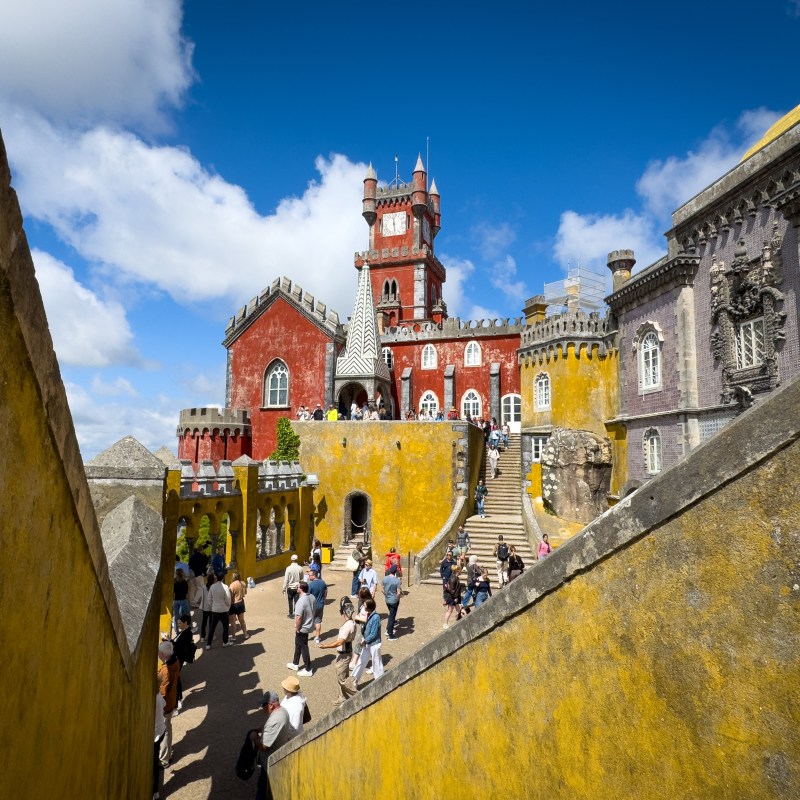
At a glance
- You can visit six architecturally masterful estates in Sintra, dating all the way back to the Middle Ages
- Sites like Quinta da Regaleira are infused with mystical symbolism and folly-filled gardens
- Visitors can easily book day trips to Sintra from Lisbon
Videos by TravelAwaits
Do you like history, mysticism, architecture, and extravagant displays of wealth?
If you’re answer was yes, then I have a surprise for you: Paradise awaits just an hour outside Lisbon, Portugal—and it’s one of the easiest tours in the country to book.
Buses, vans, and trains ferry around three million tourists to and from this misty, mountainous town between the capital of Lisbon each year. Not only is the town considered a UNESCO World Heritage Site, but so are multiple structures within it.
And while I hate being surrounded by hordes of tourists on group tours that I can’t control, I very happily put up with it to experience Sintra. And you should, too.
Remember my promise? It’s historical, mystical, extravagant, and architecturally insane.
Here’s why you can’t miss Sintra, even if you never felt called to visit Lisbon, Portugal, or even Europe.
(Just a note: Sintra is also a municipality within the Greater Lisbon area. For the purposes of this article, I’m referring to the Town of Sintra.)
8 reasons to visit Sintra, Portugal
Palacio Nacional de Sintra (Sintra National Palace) introduces you to Portugal’s medieval might
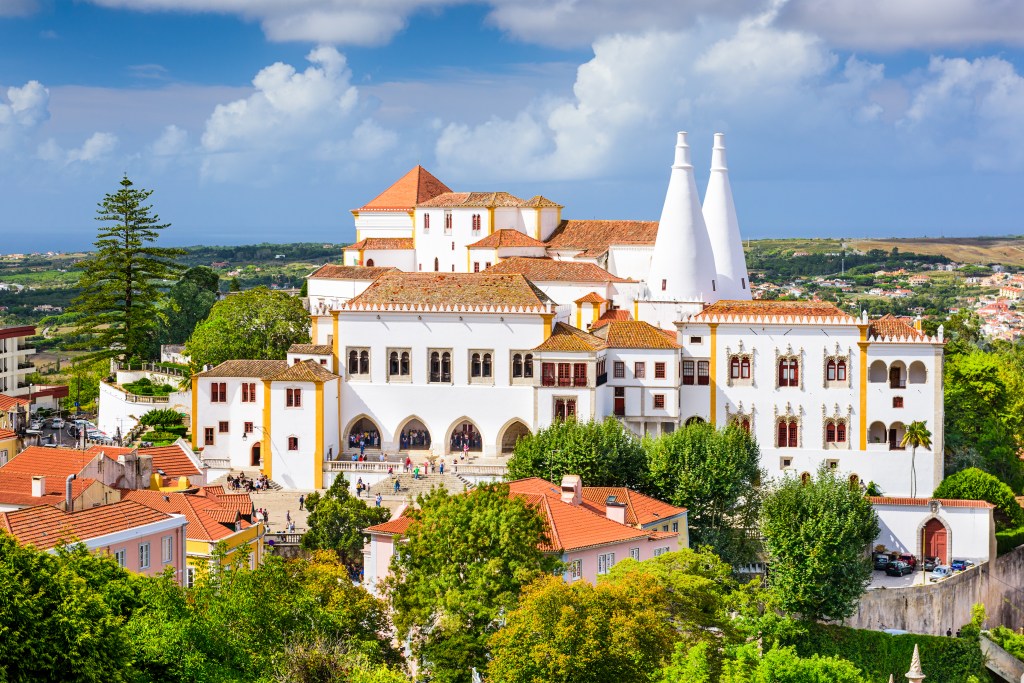
Sintra is steeped in history. It’s developed and evolution closely mirrors that of Portugal, thanks to its proximity to Lisbon and the fact that it served as a hub for powerful royals and nobles. You’ll feel that first at Sintra National Palace, located right in the center of town.
It was first built during the Al-Andalus period, when Moorish forces still occupied the region in the 8th century. After being reconquered in the 1100s, Sintra National Palace was slowly expanded in Gothic, Moorish, Mudejar, and Manueline styles throughout the 1300s and 1400s.
While we could all point out some basic Gothic and Moorish features, those Mudejar and Manueline elements are a little more exotic and eye-catching. It’s even crazier to think that Portuguese royals occupied this palace seasonally until the late 1800s.
Palacio Nacional da Pena (National Palace of Pena) is a living, breathing anime castle
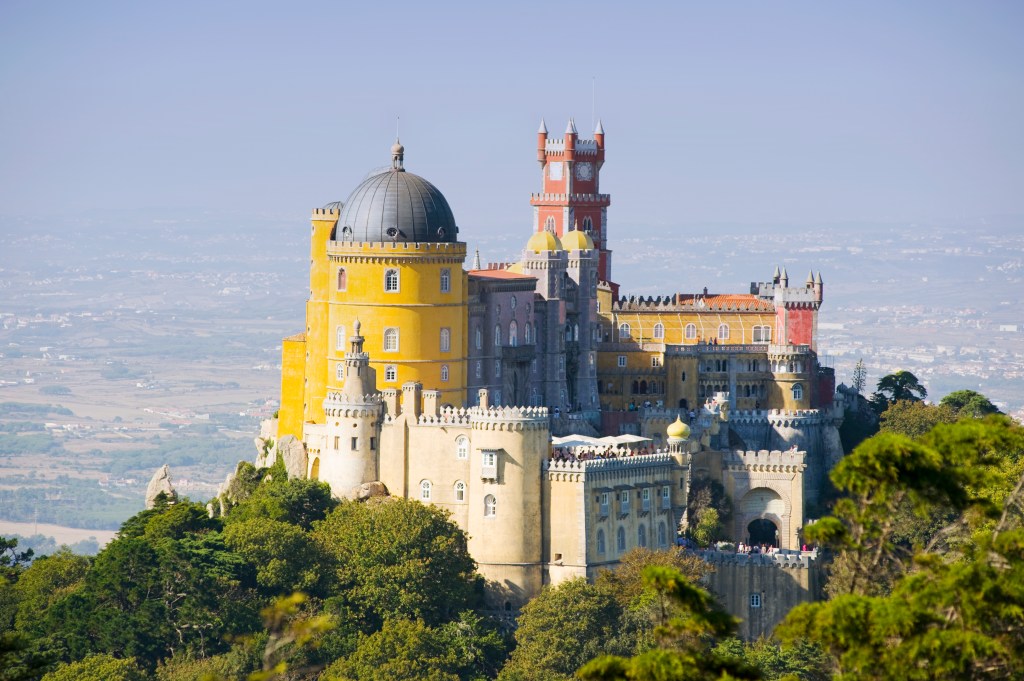
The National Palace of Pena eventually replaced the Sintra National Palace. Sitting atop the largest peak in the area, you can’t miss this brightly painted castle. It was built in the 1800s in the Romanticist style—and is so impressive that it’s still used today for official state visits by the President of the Portuguese Republic.
The building’s exterior looks like an anime-style castle that you’d find in a Nintendo game. But as you get closer, the details enthrall you. They’re much more refined and opulent than you might think from looking at the photos.
It was occupied by Portuguese royals until revolution called in 1910. Before she fled the country, Queen Amelia (the last Queen of Portugal) spent her time in the National Palace of Pena.
The Quinta da Regaleira is a Masonic folly that will haunt your soul
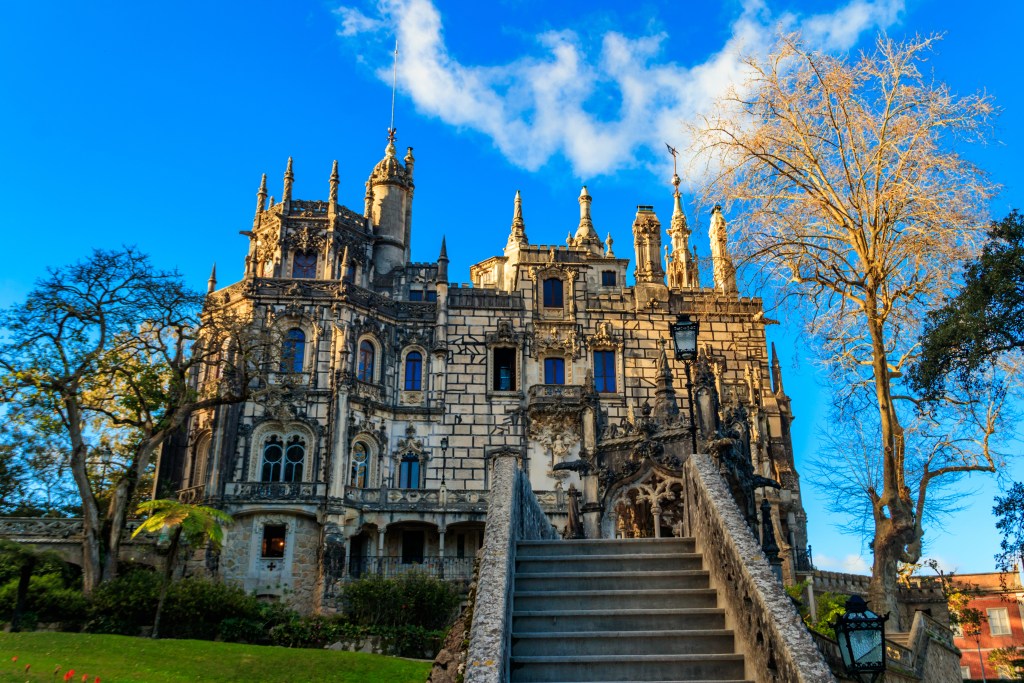
Quinta da Regaleira is considered the crown jewel of Sintra—and it’s not hard to see why. I could ramble for pages about my experience at the large estate, and how the grounds came to be. But that’s a journey I suggest you take on your own time.
The quinta is a manor house (quinta = manor) that consists of manmade lakes, grottoes, wells, benches, fountains, and gardens, in addition to a grand, stately mansion. It was designed by an Italian architect in the late 1800s and early 1900s at the request of owner Antonio Augusto Carvalho Monteiro, who was a mystic and Freemason.
Monteiro was interested in Rosicrucians, the Knights Templar (more on this below), alchemy, and Freemasonry. If you visit with a guide, they’ll point out these elements throughout the grounds. (It’s pretty endless, from gargoyles to towers to private chapels.) The most impressive structure is the initiation well.
That name is borrowed from Masonic traditions—but the basic idea is that, during any type of spiritual initiation, the participant must descend. In this case, the well of initiation makes that spiritual concept physical. You can descend into the underworld at Quinta da Regaleira. Even surrounded by tourists, it felt pretty intense, spooky, and mystical.
The Castelo dos Mouros (Moorish Castle) has Great Wall of China vibes—and great views
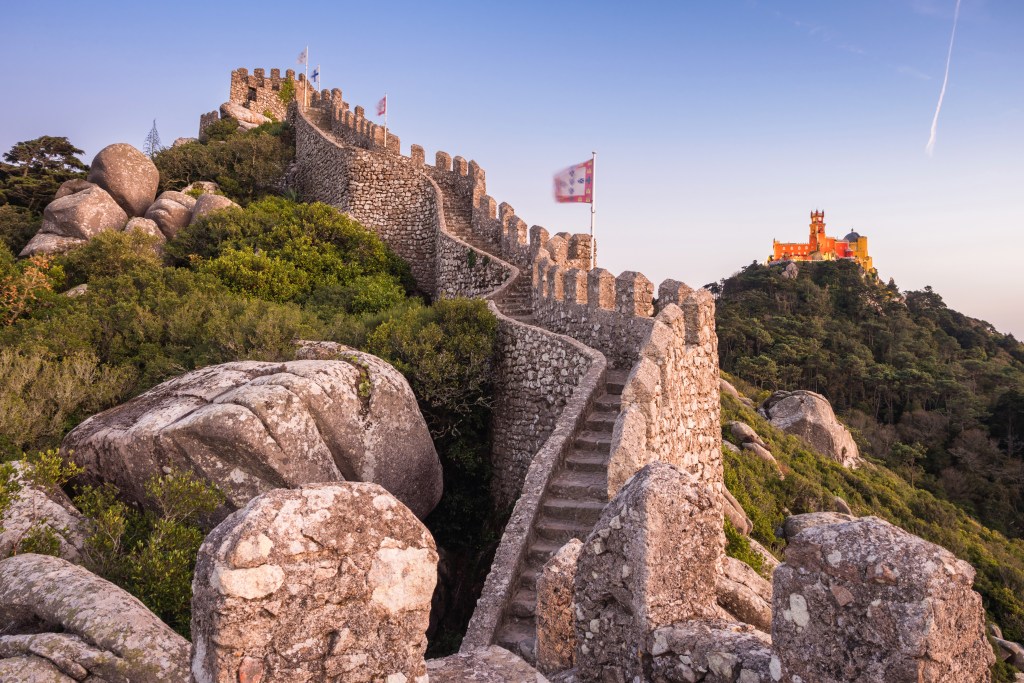
Originally built by the occupying Moors during the 700s and 800s, the Moorish Castle is still partly standing today. The walls, which you can walk on when you visit Sintra, were particularly important during the Reconquista. The Reconquista is the term used for when Iberian forces (that’s the peninsula that includes Portugal and Spain) kicked out Moorish invaders.
You can walk the very same walls that soldiers used to capture and later defend Sintra from invaders. Unfortunately, the original castle and chapel were destroyed in an earthquake. Much of the walls were also lost, but were later reconstructed to match their original forms.
It’s kind of like what I imagine walking the Great Wall of China would be like—only much narrower and shorter. Still, the views are fantastic.
Monserrate Palace offers an opulent refuge
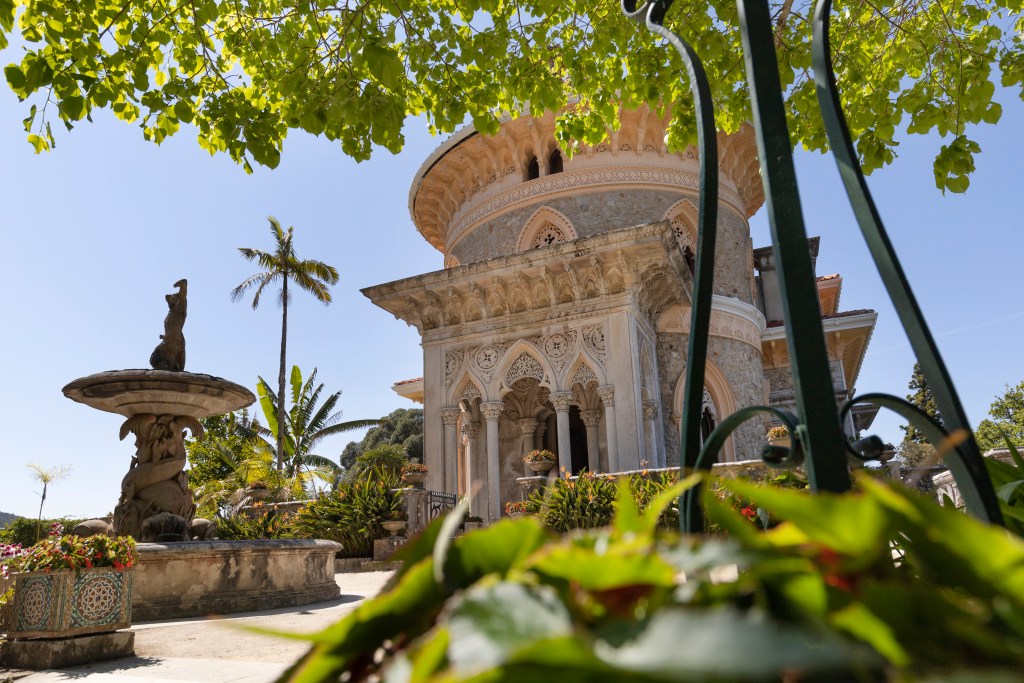
Unfortunately, the four locations in Sintra I just listed are guaranteed to be packed with tourists anytime you visit. That being said, if you know where to go, you can find a little refuge. Head to the Park and Palace of Montserrate if you want a break.
First, you’ll get to take a closer look at how the Portuguese court lived when they came to Sintra alongside the Portuguese royals. Just know that much of the grounds and palace were reconstructed after the property was transferred to English nobility in the 1700s and 1800s. Like National Palace of Pena, you’ll notice plenty of Islamic architectural influences.
Palacio Biester (Biester Palace) has a six-acre botanical garden
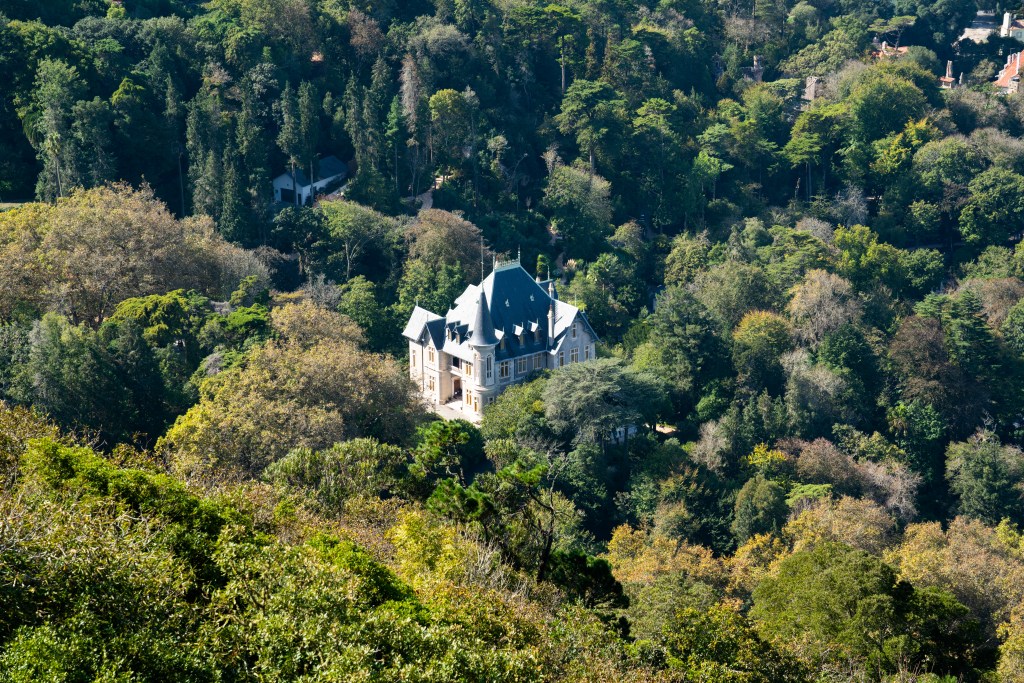
If you make it to Sintra, one of the first things you’ll notice is that the area has a very moody atmosphere. I liken it to the Pacific Northwest, where fog and lush greenery set the tone. Many estates around the area include stunning gardens. My favorite were those in Palacio Biester.
Located on steep slopes, the gardens are already dramatic enough. They include bridges, miniature castles, and even manmade caves. Plus, the gardens are home to species from across the world, from Australian ferns to an endangered ginkgo biloba tree.
Only open to the public since 2022, it’s one of those locations in Sintra that not everyone gets to see.
The area is steeped in (dramatic) medieval history—including the Reconquista & Knights Templar
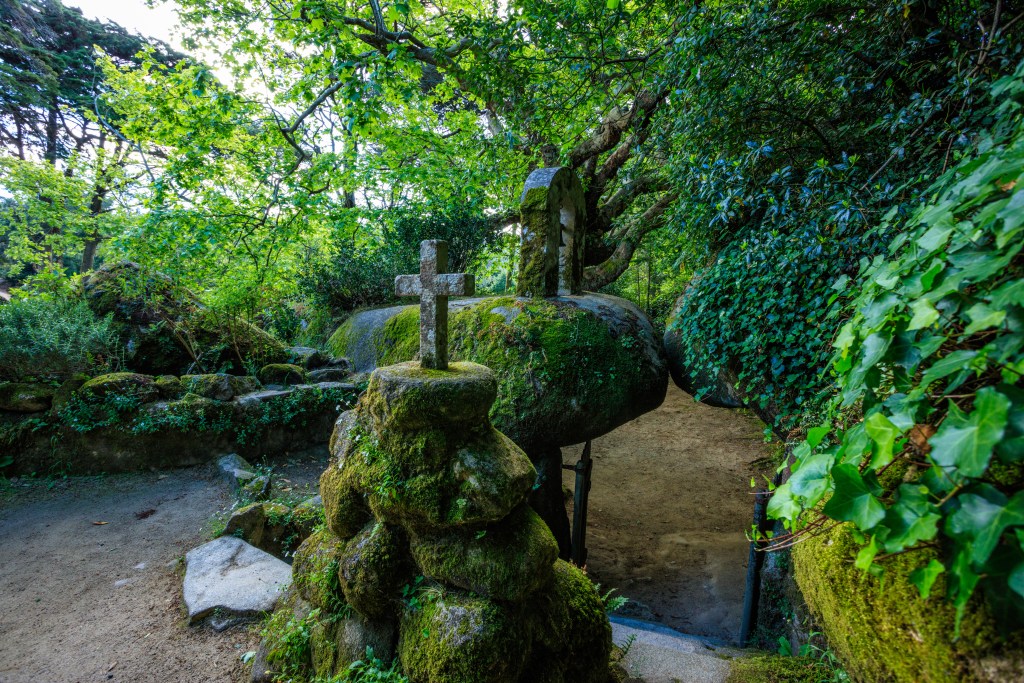
The list of manors, estates, and palaces in Sintra should be more than enough to get you to visit. That being said, the entire area captured my attention thanks to its long and very dramatic history. Once again, I could keep typing away about Sintra’s insane history—but let me stick to the highlights.
The area has been occupied for millennia. In fact, it was occupied by the Romans as early as the 1-2nd centuries BCE during the reign of Caesar. When the Moorish Arabs took over in the 700s CE, they dubbed it Xintara. During this period, the Moorish Castle was built by Arab forces.
By the 11th century, the Reconquista, a time when Iberian forces retook the peninsula from invading Arabic forces, was in full throttle. One Iberian King, Alphonso VI, captured Sintra before losing it again. In the early 12th century, Prince Sigurd the Crusader nearly stopped in Sintra to help the king retake the city on his way to the Holy Land.
It wouldn’t be until Lisbon was retaken by Alfonso Henriques in 1147 that Sintra would fall back into Portuguese hands. Alfonso Henriques would go on to reunify other parts of Portugal—earning him the eventual title of ‘The Founder’ and ‘The Conqueror’, which made him the very first King of Portugal.
You’ll recognize some spots from the big screen
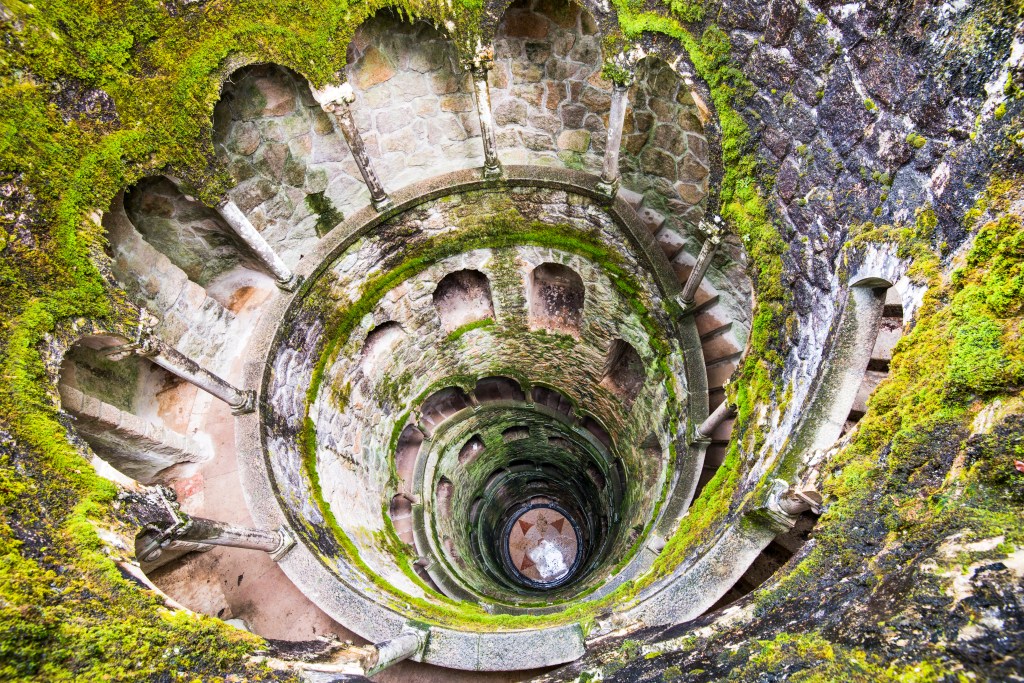
Sintra’s many estates have featured in famous projects. It was the setting for much of 1996’s Gulliver’s Travels miniseries. Biester Palace also served as the backdrop for Roman Polanski’s The Ninth Gate (1999).
I think one reference many Americans will understand is Nicolas Cage’s National Treasure. At the end of the film, the treasure hunters finally locate a trove at the back of a church in downtown Manhattan. They realize the treasure is hidden deep underground, and that they need to descend a long, winding staircase to reach it.
Sounds familiar? It’s the same idea that inspired the Initiation Well (photographed above, open to visitors) in Quinta da Regaleira.
That’s a direct reference to the Well of Initiation at Quinta da Regaleira, which was built by a Freemason. In the film, Cage’s character uses his knowledge of Freemasons and their spiritual symbols to locate the treasure. He immediately recognizes the symbol from Freemason beliefs and knows that the crew must descend.
